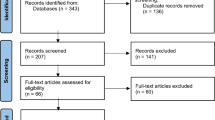Abstract
Joint hypermobility syndrome (JHS) is common in patients presenting to rheumatologists and can cause a range of symptoms leading to physical and psychological distress. Chronic musculoskeletal pain in patients with JHS often responds poorly to analgesics, and a pain management approach may be helpful. Since patients with JHS often have beliefs and experiences different to those of other chronic pain patients, they could fare better in JHS-specific programmes. Here, we report on the outcomes of patients in a JHS cognitive behavioural pain management programme. Patients fulfilling the Brighton criteria for JHS, who had suffered pain for at least 3 months, were assessed by a psychologist and physiotherapist for suitability for this programme. Those accepted took part in a programme of 8 days spread over 6 weeks, delivered by a multidisciplinary team and incorporating a cognitive behavioural approach. Outcomes were assessed at baseline, 1- and 5-month post-programme using validated outcome measures. Outcome measures at baseline and 1-month were available for 87 patients (96 % female, mean age 35 years). There were significant improvements in self-efficacy, pain catastrophising, depression, anxiety, frustration, impact of pain and average pain intensity (all P < 0.001). Although by 5 months all these outcomes had regressed towards pre-programme levels there remained significant improvements compared to baseline in all except average pain intensity. This open study shows that patients with JHS experienced significant benefits after attending a JHS-specific pain management programme, which were still evident 5 months later. Longer-term controlled studies are required.
Similar content being viewed by others
References
Grahame R, Bird HA, Child A (2000) The revised (Brighton 1998) criteria for the diagnosis of benign joint hypermobility syndrome (BJHS). J Rheumatol 27(7):1777–1779
Tinkle BT, Bird HA, Grahame R, Lavallee M, Levy HP, Sillence D (2009) The lack of clinical distinction between the hypermobility type of Ehlers-Danlos syndrome and the joint hypermobility syndrome (a.k.a. hypermobility syndrome). Am J Med Gene 149A(11):2368–2370
Grahame R, Hakim AJ (2006) Joint hypermobiilty syndrome is highly prevalent in general rheumatology clinics, its occurrence and clinical presentation being gender, age and race-related. Ann Rheum Dis 65(Suppl ii):263
Grahame R (2008) Hypermobility: an important but often neglected area within rheumatology. Nat Clin Practice 4(10):522–524
Voermans NC, Knoop H, Bleijenberg G, Van Engelen BG (2010) Pain in Ehlers-Danlos syndrome is common, severe, and associated with functional impairment. J Pain Symptom Manage 40(3):370–378
Rahman A, Holman AJ (2010) Fibromyalgia and hypermobility. In: Hakim AJ, Keer R, Grahame R (eds) Hypermobility, fibromyalgia and chronic pain. Churchill Livingstone Elsevier, London
Rombaut L, Malfait F, De Paepe A, Rimbaut S, Verbruggen G, De Wandele I, Calders P (2011) Impairment and impact of pain in female patients with Ehlers-Danlos syndrome: a comparative study with fibromyalgia and rheumatoid arthritis. Arthritis Rheum 63(7):1979–1987
Eccleston C, Williams AC, Morley S (2009) Psychological therapies for the management of chronic pain (excluding headache) in adults. Cochrane Database Syst Rev (Online) 2, CD007407
Williams AC, Eccleston C, Morley S (2012) Psychological therapies for the management of chronic pain (excluding headache) in adults. Cochrane Database Syst Rev 11, CD007407. doi:10.1002/14651858.CD007407.pub3
Coughlan GM, Ridout KL, Williams AC, Richardson PH (1995) Attrition from a pain management programme. Br J Clin Psychol Br Psychol Soc 34(Pt 3):471–479
Nicholas MK (2007) The pain self-efficacy questionnaire: taking pain into account. Eur J Pain 11(2):153–163
Sullivan MJL, Bishop S, Pivik J (1995) The Pain Catastrophizing Scale: development and validation. Psychol Assess 7:524–532
Pincus T, Williams AC, Vogel S, Field A (2004) The development and testing of the depression, anxiety, and positive outlook scale (DAPOS). Pain 109(1–2):181–188
Cleeland CS (1989) Measurement of pain by subjective report. In: Chapman CR, Loeser JD (eds) Advances in Pain Research and Therapy. Raven, New York, pp 391–403
Miles CL, Pincus T, Carnes D, Homer KE, Taylor SJ, Bremner SA, Rahman A, Underwood M (2011) Can we identify how programmes aimed at promoting self-management in musculoskeletal pain work and who benefits? A systematic review of sub-group analysis within RCTs. Eur J Pain (London England) 15(8):775.e1–775.e11
Conflict of interest
None of the authors has any conflicts of interest.
Author information
Authors and Affiliations
Corresponding author
Rights and permissions
About this article
Cite this article
Rahman, A., Daniel, C. & Grahame, R. Efficacy of an out-patient pain management programme for people with joint hypermobility syndrome. Clin Rheumatol 33, 1665–1669 (2014). https://doi.org/10.1007/s10067-014-2539-9
Received:
Revised:
Accepted:
Published:
Issue Date:
DOI: https://doi.org/10.1007/s10067-014-2539-9




